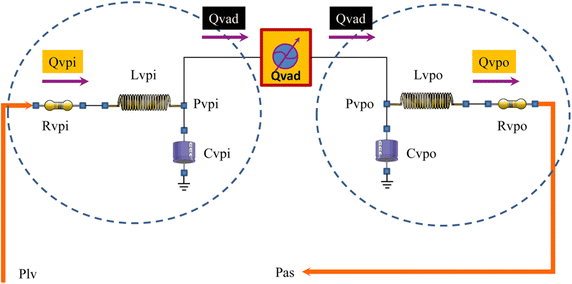Simulation as a preoperative planning approach in advanced heart failure patients. A retrospective clinical analysis
- PMID: 29720187
- PMCID: PMC5930731
- DOI: 10.1186/s12938-018-0491-7
Simulation as a preoperative planning approach in advanced heart failure patients. A retrospective clinical analysis
Abstract
Background: Modelling and simulation may become clinically applicable tools for detailed evaluation of the cardiovascular system and clinical decision-making to guide therapeutic intervention. Models based on pressure-volume relationship and zero-dimensional representation of the cardiovascular system may be a suitable choice given their simplicity and versatility. This approach has great potential for application in heart failure where the impact of left ventricular assist devices has played a significant role as a bridge to transplant and more recently as a long-term solution for non eligible candidates.
Results: We sought to investigate the value of simulation in the context of three heart failure patients with a view to predict or guide further management. CARDIOSIM© was the software used for this purpose. The study was based on retrospective analysis of haemodynamic data previously discussed at a multidisciplinary meeting. The outcome of the simulations addressed the value of a more quantitative approach in the clinical decision process.
Conclusions: Although previous experience, co-morbidities and the risk of potentially fatal complications play a role in clinical decision-making, patient-specific modelling may become a daily approach for selection and optimisation of device-based treatment for heart failure patients. Willingness to adopt this integrated approach may be the key to further progress.
Keywords: CARDIOSIM©; Heart failure; Modelling; Simulation; Ventricular assist device.
Figures



References
-
- Pourmehran O, Rahimi-Gorji M, Gorji-Bandpy M, Gorji TB. Simulation of magnetic drug targeting through tracheobronchial airways in the presence of an external non-uniform magnetic field using Lagrangian magnetic particle tracking. J Magn Magn Mater. 2015;393:380–393. doi: 10.1016/j.jmmm.2015.05.086. - DOI
-
- Pourmehran O, Rahimi-Gorji M, Ganji DD. Analysis of nanofluid flow in a porous media rotating system between two permeable sheets considering thermophoretic and Brownian motion. Thermal Sci. 2017;21(6B):3063–3073.
-
- Rahimi-Gorji M, Pourmehran O, Gorji-Bandpy M, Gorji TB. CFD simulation of airflow behaviour and particle transport and deposition in different breathing conditions through the realistic model of human airways. J Mol Liquids. 2015;209:121–133. doi: 10.1016/j.molliq.2015.05.031. - DOI
MeSH terms
LinkOut - more resources
Full Text Sources
Other Literature Sources
Medical

